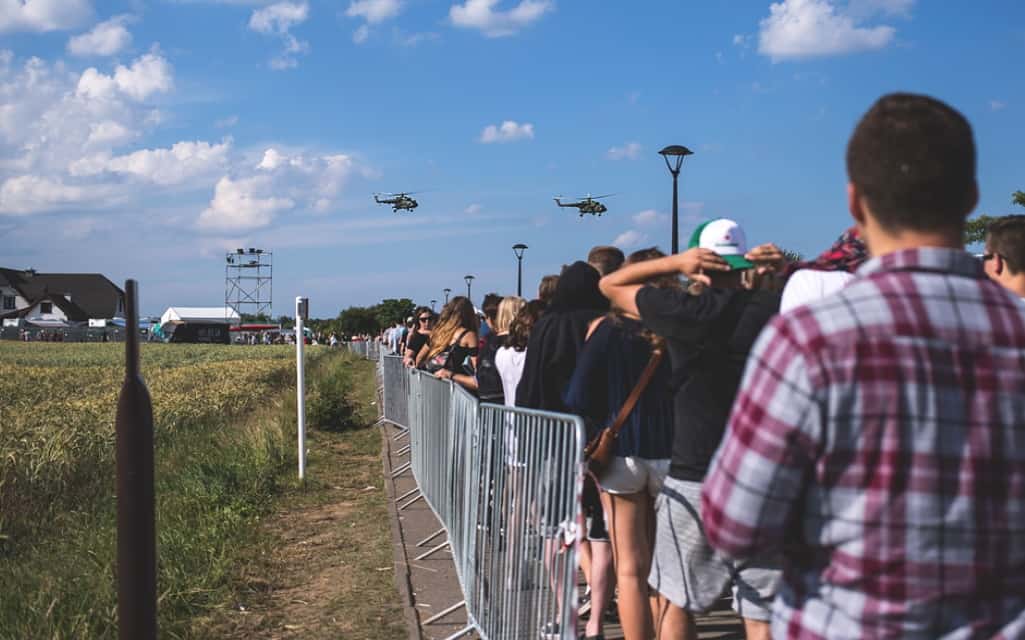When managing any bigger event, it’s crucial to ensure the safety and health of those involved, which includes staff, volunteers, contractors, members of the public and everyone else who are participating in it anyway. This might not seem like a big challenge at first but once you start working on crowd control management, you’ll notice it’s a lot harder than you think.
Thinking of a particular space that’s currently empty as something that’s easy to manage will look differently once it’s crowded with people. Unfortunately, the more people you have in one place, the bigger are changes of someone getting hurt or lost.
You will need to think of everything, from small but important details such as rope dividers to how you will react in case of an emergency. To cover everything, it’s best that you start working on your crowd control management strategy. The security qualification training, workplace skills, first aid, and crowd control refresher course Training Academy specializes in offering are professional, adaptable, and in line with industry requirements.
Crow Control Management Strategy
Some parts of your strategy might vary depending on the nature of your event or occasion, but the main steps should remain the same. Every crowd control management strategy include these steps: planning, knowing the crowd, assessing the risk, communication and review.
#1 Planning
Without crowd management, it will be impossible to run a secure, enjoyable event. That’s why it’s vital that you start to think about it early enough so you have time to go through every possible scenario and every little detail. Whatever you do, you shouldn’t do everything on your own. You will need to collaborate with other key roles if you wish to execute your strategy perfectly.
Some of the people you will need to consult to understand better the event and the place itself are:
- Your team leaders
- Event contractors
- Local authorities
- Emergency services
- Local transport providers
#2 Knowing Your Crowd
Do you know how many attendees will approximately be at this event you’re managing? Depending on the nature of the event, you can expect anywhere from dozens to thousands of people which significantly changes your amount of preparation.
You should base your estimate on previous experience, dates (holidays, weekends), whether or any other factor that might impact the number of attendees. Moreover, you need to ensure that the site is accessible for everyone with adequate facilities and safe routes for children and wheelchairs.
Also, think about how well is this crowd informed and will you need to provide a lot of direction. Can you expect people to come to a lot earlier or will the flow of the people be constant? Of course, some behaviours can’t be predicted but the more you work on the options, the more prepared you will be for the event.
#3 Assessing the Risk
Assessing the potential risks at the event could be a part of the legal requirement, such as malfunctioning equipment to bomb and fire threats. However, the crucial safety and health risks of the crowd are involving their movement. You should identify all the ways to manage that motion at the maximum level of safety.
Some of the things you might want to consider, depending on the space itself, are:
- Staggering the entry process
- Arranging dividers to keep pedestrians separated from vehicles and to keep emergency access routes clear
- Employing people to supervise entry and exits to ensure the flow of the crowd
- Navigating people away from places likely to cause bottlenecks
- Ensuring all walkways have very good lighting
#4 Communication
The most efficient ways to deliver a message to attendees will, of course, be determined by the nature of the event or occasion. Displaying signage is usually the best way to convey your key information, such as exits, law restrictions, structural warnings, etc. All the signs must be placed in a visible place where absolutely everyone can see it from afar.
This way, you’re preventing misunderstanding which could lead to injuries or other unwanted situations. Make sure your attendees are given maps, it can be on a sign or as printed material, but they need to have the information to successfully find alternative routes.
Not to mention that during the entire event you need to efficiently communicate with all of your team members who are there. Determining the way of communication is equally important as being available all the time to those who need you.
#5 Review
Every strategy needs to be reviewed. That doesn’t imply that you’re only going to review it after you’ve conducted it. Your strategy should be reviewed after the event as well. When everything is still fresh in your mind, sit down with your team members and write down suggestions, complaints, acknowledgements, etc.



